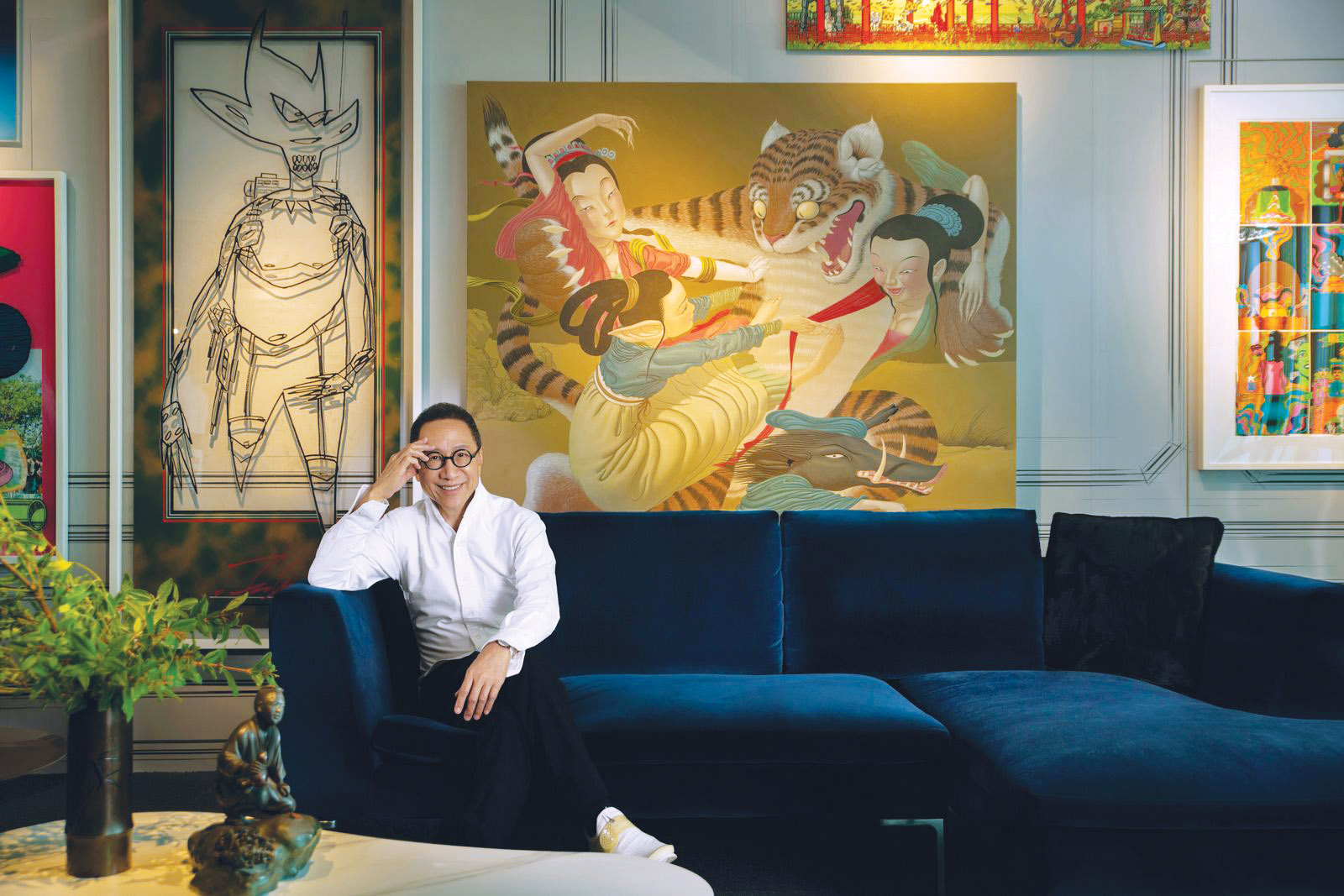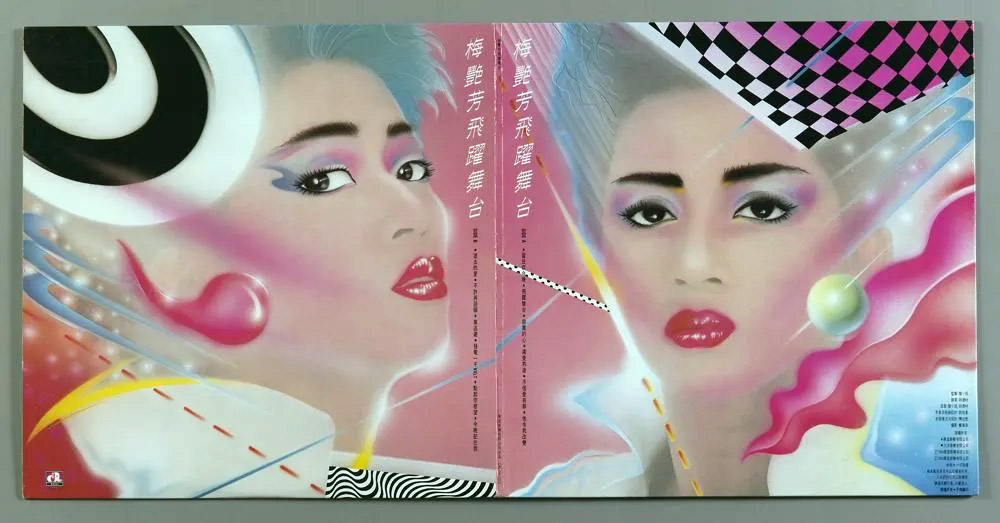Alan Chan Yau-kin’s penchant for fine art and talent for design shines clearly in his work, fusing East with West and celebrating China’s 5,000-year-old culture. Wang Yuke writes.

The work of internationally renowned designer Alan Chan Yau-kin — which ranges from the candy-colored album cover Leap the Stage for late Hong Kong Cantopop diva Anita Mui Yim-fong in the 1980s, to instantly recognizable logos representing major brands, to the interior designs of famous restaurants — exudes virtuosity and a determination to push the envelope.
A delve into the oeuvre of this visionary artist, whose voracious appetite for design and unwavering ambitions have initiated new trends in the design and advertising industries and redefined the boundaries of possibility, reveals a perpetuating theme: the seamless fusion of Eastern heritage with Western innovation.
READ MORE: Undying spirit
Chan is known to go with the flow, adapting to the ever-changing zeitgeist, while injecting something fresh and surprising, which defines the shape-shifting attributes of his art of design. He says he finds the practice of design both liberating and inhibiting.
A sense of restraint is evident in his commercial designs — critically exalted achievements which remain instantly recognizable around the world, even after five decades. His commercial design projects run to 16 pages on his corporate website. All of them will be familiar to most of today’s consumers — from his Coca-Cola cans in 2003 to the polychromatic prints featuring Hong Kong’s dreamy skylines for the Four Seasons Hotel in 2005.
Chan’s natural talent and artistic sensibilities were nurtured by his family during his formative years, when Chan relocated to Hong Kong with his parents in the 1940s.
“We had our dwelling and three other stores to be refurbished and furnished from scratch. My dad wasn’t quite literate, but it didn’t deter him from being resourceful. Discarded materials were used to assemble pieces of furniture. I became his little assistant,” the designer recalls. “I can fondly remember when we dismantled and reassembled the wood panels of abandoned fruit crates, repurposing them into a wardrobe designed by my dad. By then, I had already dabbled in woodwork.”
From apprentice to authority
During his teens, Chan learnt from his father a sense of design and craftsmanship. But the concept of “design” as a discipline did not appear on the collective radar until the 1960s, when design colleges and institutions came into being. Chan’s penchant for fine art blossomed. “I was obsessed with sketching in secondary school,” he says. Theaters nearby, adorned with celebrities’ portraits and posters that grabbed his attention, became the young Chan’s after-school hangout spots. He soon found himself surrounded by newspaper and poster designs for big festivals, events, and school parties. “It made me wonder — am I blessed with design talents?” he says. It wasn’t until after Chan’s graduation from secondary school that he entered the design sphere — starting as an apprentice and then achieving recognition.
Chan’s design bids over the past 55 years display an expansive range, involving projects from the entertainment industry to hospitality, and from retail to catering and architecture. His artistic endeavors are marked by trail-blazing avant-garde imprints, which create a fizz around a brand or project, and shape and influence the design and advertising zeitgeist.
When rummaging through Anita Mui’s album covers, you would likely pause when you come upon a vintage one in kaleidoscopic shades, with the pop legend wearing flamboyant makeup and her penetrating gaze exuding an androgynously empowered allure. That’s Chan’s masterpiece — Leap the Stage.
“It’s true that overblown offbeat conceits were the trend in album marketing and celebrity packaging in Hong Kong at that time,” says Chan. “It might be true that my design for Fairwood (one of the most popular Cantonese fast-food chains in Hong Kong) helped bring the restaurant back from the brink of bankruptcy. But I would say there’s no single design I would call my magnum opus, because that would be for the beholders of my design work to decide. If you are a fan of music, my designs for Anita Mui’s and Leslie Cheung Kwok-wing’s albums could be considered my claim to fame. If you’ve been to Hong Kong International Airport and taken note of its identity logo (designed by Chan), you might see it as shorthand for my signature approach.”

Despite the nuances in each of his design projects, the common denominators throughout have been the “marriage of East and West” theme, the “oriental passion and Western harmony” ethos, and “the celebration of China’s 5,000-year-old cherished culture with aplomb”, Chan says.
A case in point is the posh clubhouse, The Barn, in Beijing, a repurposed and refurbished granary — the only surviving granary of its kind in China still in a sound condition — where the wood-paneled pitched roofs, the texture of the wooden columns, the weather-dappled stone walls, the festive lanterns, the doorways in radiant Chinese red, and the disc-shaped adornments punctuating yet unifying the dining space, all sing in harmony with Chinese traditional culture. Meanwhile, the traditional Chinese teahouse chair rendered in transparent plastic, the spiraling staircases in translucent vibrant red, and the metallic and iron-cast elements, the subdued but trippy illuminations, all combine to create the kind of contemporary extravaganza that’s often associated with Western culture.
When it comes to Wing Chun — a concept-based Chinese martial art with contemporary dance, which was an instant hit when it premiered at the Hong Kong Academy of Perfuming Arts in January — Chan raved about the performance on his social media. “The next new generation of performers will be from China,” he wrote.
ALSO READ: Cheongsam and then more
More than an interdisciplinary invention, the piece that was presented as a dance drama has numerous well-preserved elements of Chinese culture permeating throughout, from the setting to the costumes and choreography. This philosophy of art creation aligns with Chan’s. To him, aesthetics exists as a perpetual end to be attained and amplified, and the dance masterpiece, which defies genre definition, breathes fresh air into the “means to the end of parading oriental aesthetics with a flourish in the contemporary milieu”, he says.
A cautious, slightly reserved speaker, Chan admits without hesitation that he has never struggled with a creative block when it comes to design.
What’s the secret weapon in his artistic arsenal?
“Be a ‘playboy’. By which, I mean ‘stay hungry’. There’s nothing wrong if you resign yourself to leading a vanilla life and settle on what you’ve got hold of. But if you’re keen to leap beyond your current league, you’ve got to be hungry, ambitious, driven and motivated.”
Jiang Jiaxuan contributed to this story.
Contact the writer at jenny@chinadailyhk.com


